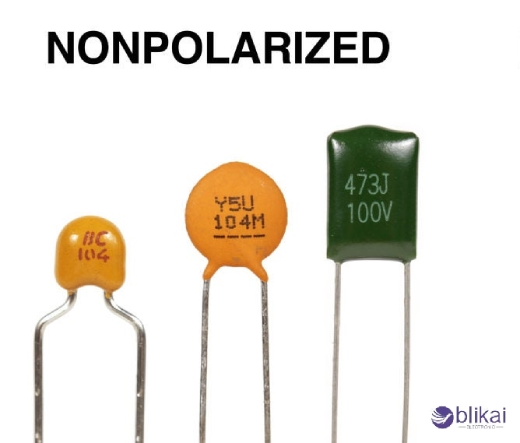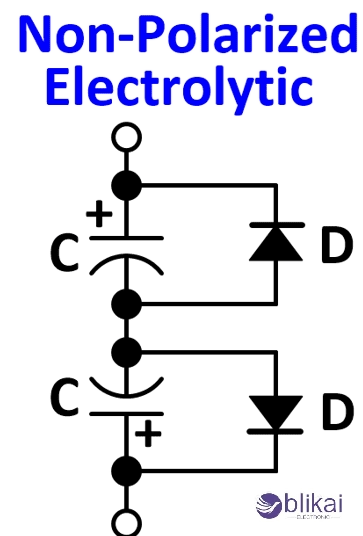What Does a Non Polar Electrolytic Capacitor Do
Understanding Non-Polar Electrolytic Capacitors
Non-polar electrolytic capacitors are electronic components that store and discharge electric energy. These capacitors can be connected to a circuit without considering the polarity constraint as opposed to polar capacitors. Two metal conductive plates separated by a dielectric material-except in this case for most non-polar types, the insulator is aluminum oxide-construct this capacitor. The electrolyte is in these capacitors in a solid or gel-like form, enabling the bidirectional current flow.

Key differences from polar capacitors
The primary difference between non-polar electrolytic capacitors and polar consists in the fact that the former may function in AC applications, whereas the latter may only be operational in DC circuits. Hence the current can only flow in one direction in the polar varieties. The construction of non-polar capacitors is symmetrical. This symmetry permits their use without reverse polarity damage. Similarly, there are non-polar capacitors with a higher voltage ability and mileage, provided that a voltage of a higher amount is accepted.
Functionality of Non-Polar Electrolytic Capacitors
Energy storage capabilities
Non-polar electrolytic capacitors are excellent for energy storage applications and have a more favorable capacitance-to-volume ratio than polar capacitors. In short, they are used in the same applications where capacitors in lower number ratings are required to store energy but in lesser quantities. Because they can build up and release electric charge in a very short duration, they find use in power supply filtering and smoothing.
Voltage handling characteristics
Unlike the polar electrolytic capacitors, the non-polar types can work on AC voltages very effectively. Back-to-back voltage reversals cannot harm the integrity of these non-polar capacitors. As such, they may be used in circuits where the polarity of the applied voltage is prone to change. This property allows them to be used in a versatile range of electronic designs.
Bi-directional current flow
capacitors, it allows current to pass in both directions. This two-way current flow feature plays a crucial role in AC circuits or applications where the current direction is often in a state of change. It allows for an efficient charge and discharge by the capacitor irrespective of the current direction, thus enhancing its performance and reliability.
Frequency response
Non-polar electrolytic capacitors usually have good frequency response features, especially in the low-frequency range. They are good at filtering out AC disturbances from DC signals in power supply circuits. In general sense, it is safe to say they are capable of performing over wide bands of frequencies. It is worthy to note that an important factor in the performance of non-polar electrolytic capacitors at higher frequencies is their performance. At higher frequencies, other types of capacitors might be designated to be the more appropriate choices.
Applications in Electronic Circuits
AC coupling and decoupling
In the applications of AC coupling and decoupling, non-polar electrolytic capacitors act exceedingly well. Generally speaking, in AC coupling, the capacitors will block DC signals and allow AC signals to pass through; hence they are used in audio systems and communication circuits. In decoupling, impedance to ground is sought so as to allow low-frequency coupling while, at higher frequencies, there is an avoidance of any unwanted signal coupling between different stages of the electronic circuit.
Signal filtering
These multi-purpose models have a wide range of applicability in the signal filtering circuits. Such non-polar electrolytic capacitors can be used to shape frequency responses in low-pass, high-pass, and band-pass filters. They find extensive use in crossover networks in electronic sound systems, working by separating different frequency ranges for different speaker drivers.
Power supply smoothing
These non-polar electrolytic capacitors have very important effects in smoothing out voltage ripples in power supplies. They charge during peaks and discharge during troughs, acting like energy reservoirs and giving the DC output a stabilized value. This feature is crucial in various electronic sets, allowing sensitive components to operate with clean power.
Audio equipment enhancements
Within audio equipment, non-polar electrolytic capacitors are used extensively. Generally, as claims of their better sound due to reduced distortion and bass enhances the performance of speaker systems and reproduces sounds without distortion, these capacitors are also found in tone control and equalizer circuits.
Motor start and run applications
In motor circuits, with non-polar electrolytic capacitors for use in starting as well as running modes. They permit the single-phase motors to obtain a specific angle shift for satisfactory starting and working. Since they have an extensive AC capability, they are utilized in motor run capacitors, enhancing the performance and efficiency of the motor.

Advantages of Non-Polar Electrolytic Capacitors
Versatility in circuit design
The non-polar electrolytic capacitors in circuit design offer advantages with respect to the ranges of voltages that can be applied. This flexibility allows the design engineer to look for simplifications as far as circuit layout and production of components are concerned since only one non-polar capacitor would take the place of two polar capacitors in many applications. Such flexibility is particularly advantageous in audio circuits, power supplies, and signal coupling applications, where there is a possibility of bi-direction current flow.
Improved reliability in alternating current scenarios
One of the main advantages of non-polar electrolytic capacitors include their unmatched prowess in AC circuits. While polar electrolytic capacitors are destroyed by reverse voltages, non-polar electrolytic capacitors can tolerate voltage reversals safely without damage or failure. Thus, it is ideally suited for use in coupling AC, filtering, and smoothing applications, where often, conditions change, and the polarity of the voltage could switch quite a few times. This reliability improves on AC will guarantee a longer lifespan and more stable devices.
Extended lifespan compared to polar capacitors
Non-polar electrolytic capacitors are also typically longer-lasting than their counterparts. A set of these non-polar electrolytic capacitors can handle it because they are much sturdier and because aging in miserable conditions is not possible for this nonpolar type of capacitor due to total bidirectional current flow. An advantage of being non-polar is that this quality would also lessen the possibility of breaking down due to incorrect installation or unexpected voltage reversals. Thus, the inclusion of non-polar electrolytic capacitors into a system often provides considerable margin in terms of maintenance and replacement intervals, directly correlating to increased system reliability and lower long-term costs.
Selecting the Right Non-Polar Electrolytic Capacitor
Capacity considerations
Capacitance rating is the first thing to check out in selecting a non-polar electrolytic capacitor. This capacitance rating describes how much charge the capacitor can harbor. Select a capacitance to match your circuit needs, considering ripple current, frequency response, etc.
Voltage ratings
When selecting capacitors, voltage rating becomes an important issue for a safe fit. Always choose one with a voltage rating higher than the maximum voltage in a particular circuit. As a general rule, choose a capacitor with a voltage rating above the anticipated maximum value by at least 20%, in order to provide a margin of safety against voltage spikes which can arise in a type of load, which also guarantees longevity.
Temperature limitations
Non-polar electrolytic capacitors have a working temperature range, which is optimal. Consider the working temperature of your circuit when selecting a capacitor that can withstand such conditions. Ensure to check details on both the minimum and the maximum operating temperature to ensure smooth performance across all likely working conditions.
Size and form factor
Capacitors have a considerable application for the physics of design; their dimensions become extremely important in compact designs. Look at the space you have available for your PCB when selecting a capacitor. Some applications might warrant low-profile components instead, while some can offer flexibility. Also take into consideration any lead spacing, as well as the choice of mounting to assure suitability for your arrangement.
Conclusion
Non-polar electrolytic capacitors have a lot of importance in electronics. These have certain unique advantages when compared with polar capacitors. These could run with AC applications; thus, they could be used in signal coupling, filtering, and power supply smoothing. Usefulness in a circuit that is without any concern for polarity will simplify the design concerning the probable risk of damage by errors of installation.
Choose your non-polar electrolytic capacitor by taking into account capacitance, voltage, and frequency. Non-polar electrolytic capacitors help improve the performance and stability of your electronic device. They are very useful due to their possible application in energy management and signal handling for a wide variety of applications from audio equipment and switching power supplies to very complex circuits.
Related Articles
What is a Bypass Capacitor & Why Do You Need One?
Installing a Dual Run Capacitor: What You Need to Know
What is a Ceramic Capacitor and How Does it Work?
What is an Audio Capacitor and Why Does it Matter?
What is a C65R Capacitor? A Beginner's Guide
What is an Audio Capacitor and Why Does it Matter?
How to Test an Electrolytic Capacitor
CBB65 Capacitors: Key Features, Applications & Advantages
CBB60 Capacitor: Characteristics, Applications & Advantages
Capacitor Symbol: What Does It Really Mean?
What is Tantalum Capacitor: Design, Construction and Applications
Capacitor Tester: Types, Applications & Advantages
How to Test a Capacitor: Simple Steps and Tools
How to Test a Capacitor with a Multimeter [Guide]










